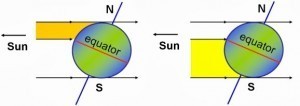In 1768 Charles Green joined Captain James Cook on a voyage to Tahiti. He was assigned the position of ship’s astronomer, and along with Cook intended to observe a transit of Venus. Because a Venus transit could be used to determine the size of our solar system, astronomers were sent all over the world to observe it. His voyage began in August of 1768, but didn’t arrive in Tahiti until April of 1769. Eight months of travel just to reach the right position on Earth to observe the transit.
In 1919 Arthur Eddington traveled to Príncipe to observe a total eclipse in order to test Einstein’s theory of general relativity. By this time long journeys were much less arduous, and took just six weeks to reach Príncipe by steam ship. It would have taken less time, but Eddington was stuck on Madeira for three weeks due to ships being full of soldiers returning home after World War I. It was still a pretty arduous trip by today’s standards, but Príncipe was the ideal location for observing the eclipse.
Today with our hyperconnected world, observational data can be gathered and used from all over the world. Often you don’t have to make a long journey to do astronomy. But modern telescopes still need to be located in remote locations. One of these locations is in the Andes mountain region of Chile. You may have heard of some of these sites, such as ALMA, CTIO and Gemini. These telescopes play a central role in astronomy, but their remoteness means few people ever get a chance to see them in person. Over the next couple weeks, however, I’ll be one of the lucky few.
It is part of a program known as the Astronomy in Chile Education Ambassador Program (ACEAP), which is funded by NSF. My journey won’t be nearly as challenging, just a 10 hour flight from Atlanta to Santiago. I’ll also be blogging, tweeting and the like while I’m there. You’ll see daily posts (wifi willing) here, as well as posts on my Facebook, Google+, Twitter and YouTube pages. You can also follow other ACEAP members on the official Facebook page.
So stick around. It should be quite an adventure. The next time you hear from me, I’ll be in South America.












Comments
good luck! 🙂
Let’s hope you don’t meet too much oncoming traffic, either direction. Narrow roads, switchbacks, and steep cliffs are just what’s necessary to get up there.
Madeira, not Maderia, right? :-)Have a good trip
Good golly yes. My bad.
Safe travels and looking forward to following your journey! 🙂
Brian, have fun!